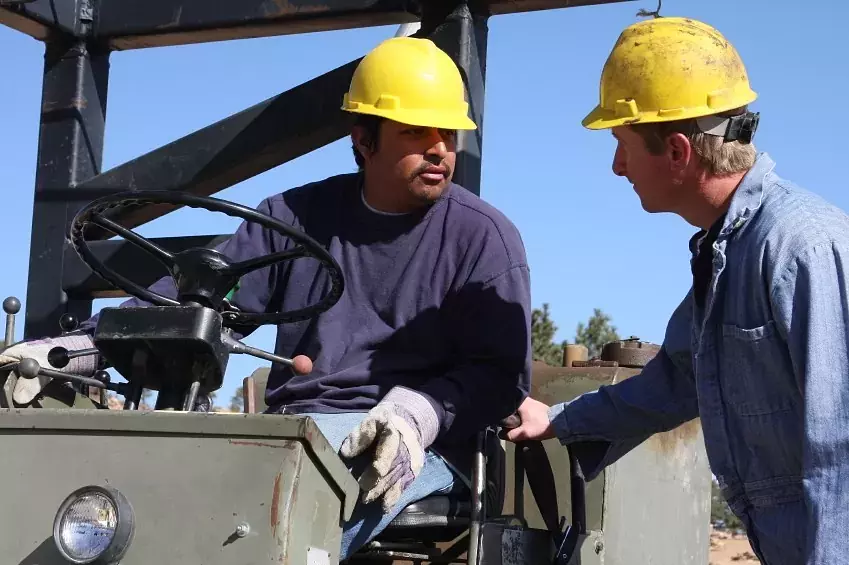 Managing an industrial workplace means a lot more than maximizing production, it also means keeping employees safe. Worker safety is a direct result of operational guidelines. If you enforce these guidelines and lead by example, the risk of injury is minimized.
Managing an industrial workplace means a lot more than maximizing production, it also means keeping employees safe. Worker safety is a direct result of operational guidelines. If you enforce these guidelines and lead by example, the risk of injury is minimized.
When it comes to forklift operation, training is vital. Not only is it important for drivers to understand the ins and outs of safe operation, but every employee around the forklift must know the risk factors.
This article will introduce employers to the crucial safety guidelines that must be present in the workplace. By adhering to these rules, you could prevent a potential worker’s compensation claim. Also, you will be promoting responsible use of equipment, which could save money from mechanical repairs and equipment replacement.
Only Trained Personnel Should Operate a Forklift
This is rule number one. Untrained employees should never have access to the forklift keys.
Even experienced drivers should be closely supervised. This is especially true for newly trained workers. It’s a smart practice to periodically quiz employees regarding equipment maintenance, safety rules and responsible forklift use.
One Training System May Not be Appropriate for All Forklifts
Forklift designs evolve over time, and it’s important that the employee understands the specifics of the particular machine. What’s the maximum load weight? What are common issues with that particular model? Forklift drivers must know the answers to these questions.
There are certain factors that must be addressed in every training program. Employees must be familiar with both the forklift mechanics and the work zone. They should understand the location of forklift paths and the no-drive areas.
Employees Must Understand Forklift Maintenance
Each forklift has a manufacturer guide that details the maintenance requirements of your particular model. Forklift operators and supervisors must read and reread these guides. It’s recommended that employees and supervisors are quizzed on the content of these guides.
A maintenance schedule should also be developed. Ensuring that the equipment is properly maintained can prevent unexpected accidents.
Regular inspections are integral parts of any maintenance schedule. A checklist should be developed that examines the individual parts of the machine, and forklifts should be assessed while active and inactive.
Make the Workplace Safe
Forklift paths and no-drive zones should be clearly marked. Floor-marking tape is the most convenient, cost-efficient way to mark the floor. Make sure the workplace is adequately lit, and any slippery areas should be noticeably marked.
Workers should be aware of any uneven or sloping areas. If these exist, drivers must slow down when crossing them.
Perhaps the most important factor in any safe workplace is compliance with the rules. Supervisors must lead by example, and every rule infraction must be addressed. A few guidelines that must be enforced include:
- Forklift should only be used for its intended purpose
- Safety inspections should be carried out twice daily, before and after operation
- Forklift operators must remain seated while driving
- Loads should be fully placed on forks, touching the back rest or truck carriage
- Reduce speed when operating near pedestrians or obstacles
- Pedestrians have the right-of-way
- Clothes should be highly visible
- No passengers should be riding in the forklift
- When the forklift is not in operation, the keys should be removed, the controls must be in neutral, the power must be shut off, the forks should be completely lowered, and the parking brake must be set.
Seat belts Should Be Worn at All Times During Operation
If your forklift has a seat belt, it is imperative that it is worn at all times. They help to:
- Prevent the driver from falling out of the vehicle during unexpected collisions
- Prevent the driver from falling out of the vehicle if the forklift tilts
- Keep the driver under the overhead safety guard
- If your forklift does not feature a seat belt, consider having one installed. Some of the most serious injuries happen when forklift operators fall out of a tilting forklift, and the machine lands on the worker.
In Summary:
- Establish a training program
- Training should cover forklift mechanics
- Training should be carried out by an approved supervisor
- Log books should be used to record training progress
- Assessments should be given to test the worker’s understanding of safety and operational guidelines
- With proper training, regular forklift maintenance and periodic employee quizzes, the risks of injury greatly reduce, as do the chances of causing an accident that disrupts productivity.
